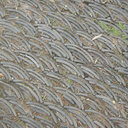Influence of sulfur fumigation on the chemical constituents and antioxidant activity of buds of Lonicera japonica.
Mots clés
Abstrait
Lonicera japonica flos is widely used as a pharmaceutical resource and a commonly-employed ingredient in healthy food, soft beverages and cosmetics in China. Sometimes, sulfur fumigation is used during post-harvest handling. In this study, a comprehensive comparison of the chemical profile between sun-dried and sulfur-fumigated samples was conducted by HPLC fingerprints and simultaneous quantification of nine constituents, including secologanic acid, along with another eight usually-analyzed markers. Secologanic acid was destroyed, and its sulfonates were generated, whereas caffeoylquinic acids were protected from being oxidized. The residual sulfur dioxide in sulfur-fumigated samples was significantly higher than that in sun-dried samples, which might increase the potential incidence of toxicity to humans. Meanwhile, compared with sun-dried samples, sulfur-fumigated samples have significantly stronger antioxidant activity, which could be attributed to the joint effect of protected phenolic acids and flavonoids, as well as newly-generated iridoid sulfonates.


